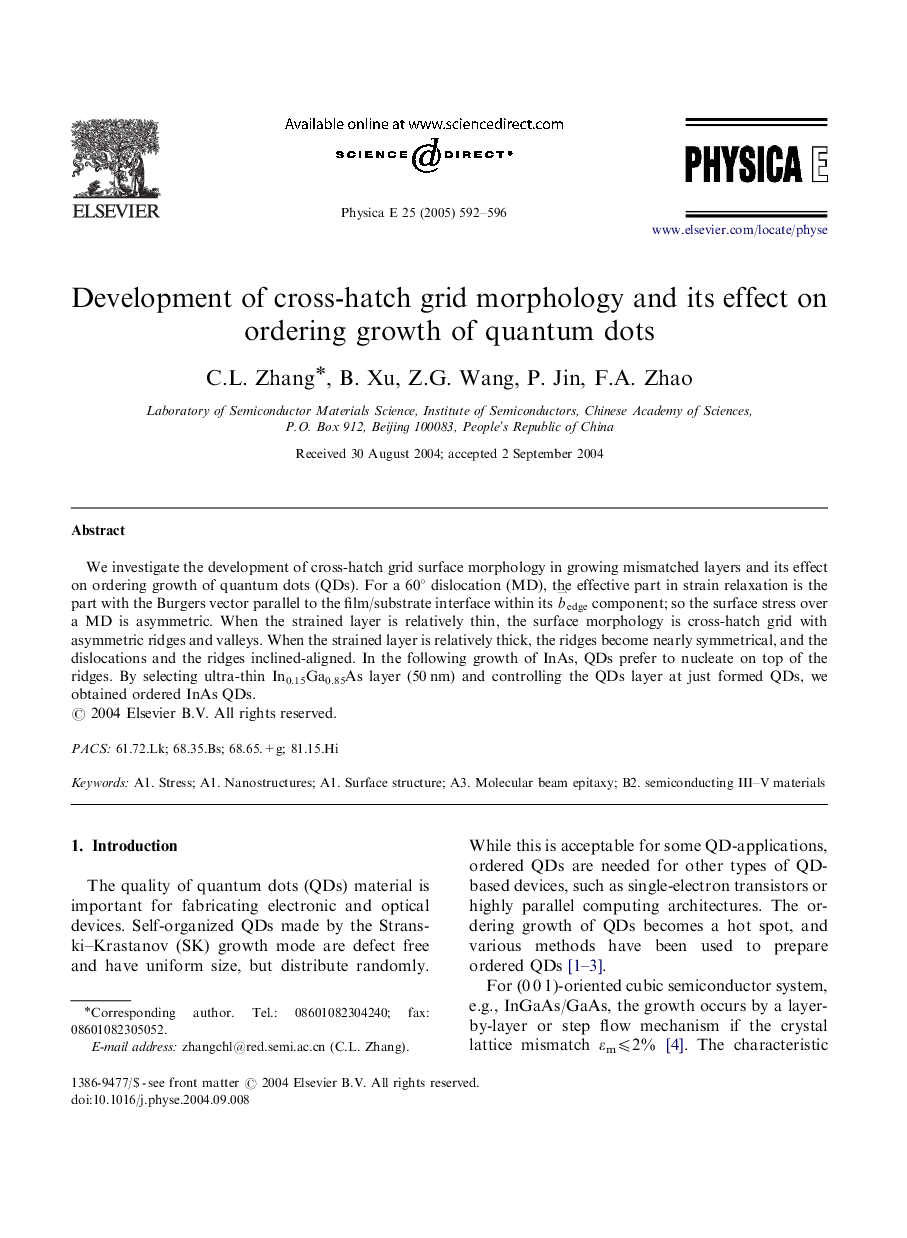| Article ID | Journal | Published Year | Pages | File Type |
|---|---|---|---|---|
| 10642364 | Physica E: Low-dimensional Systems and Nanostructures | 2005 | 5 Pages |
Abstract
We investigate the development of cross-hatch grid surface morphology in growing mismatched layers and its effect on ordering growth of quantum dots (QDs). For a 60° dislocation (MD), the effective part in strain relaxation is the part with the Burgers vector parallel to the film/substrate interface within its bâedge component; so the surface stress over a MD is asymmetric. When the strained layer is relatively thin, the surface morphology is cross-hatch grid with asymmetric ridges and valleys. When the strained layer is relatively thick, the ridges become nearly symmetrical, and the dislocations and the ridges inclined-aligned. In the following growth of InAs, QDs prefer to nucleate on top of the ridges. By selecting ultra-thin In0.15Ga0.85As layer (50 nm) and controlling the QDs layer at just formed QDs, we obtained ordered InAs QDs.
Keywords
Related Topics
Physical Sciences and Engineering
Materials Science
Electronic, Optical and Magnetic Materials
Authors
C.L. Zhang, B. Xu, Z.G. Wang, P. Jin, F.A. Zhao,
